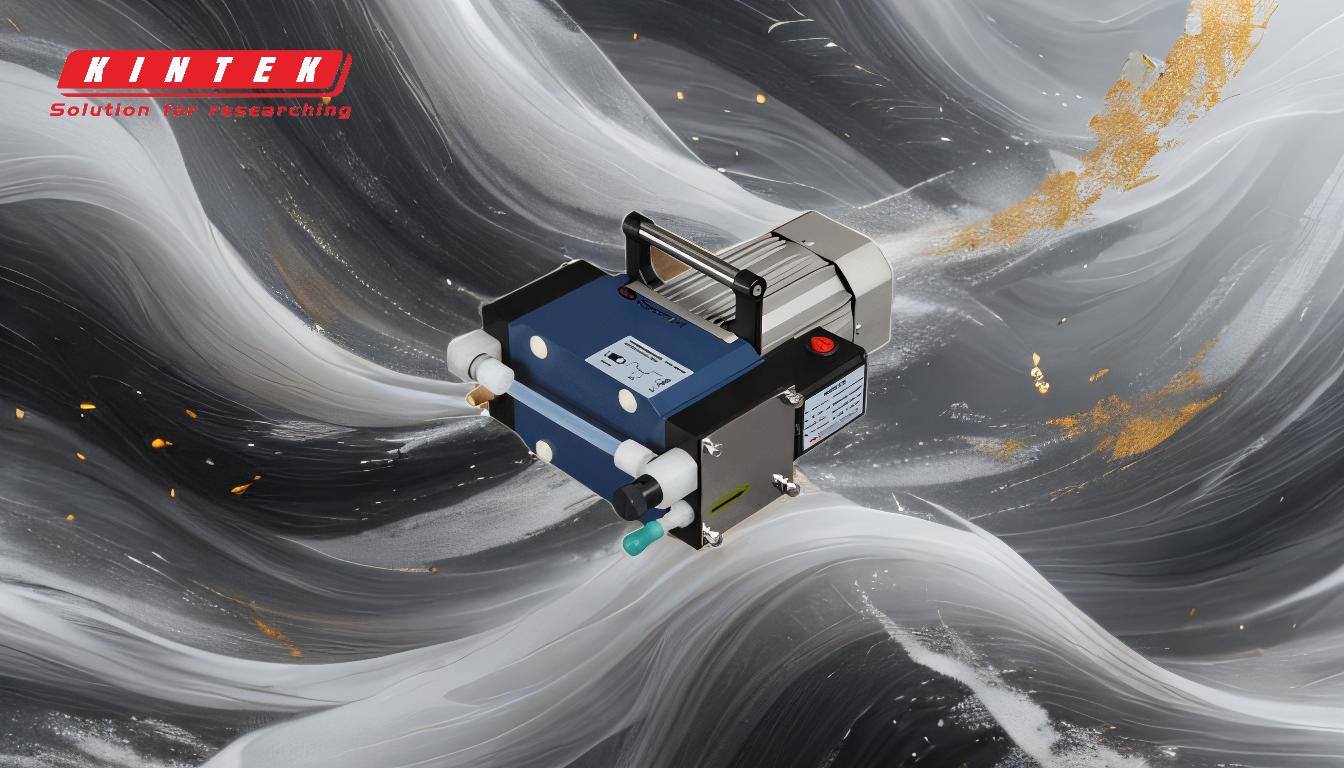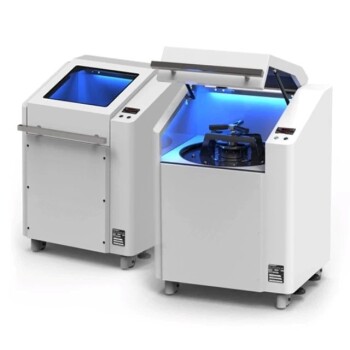Mechanical pumps and diffusion pumps are both used to create vacuums, but they operate on entirely different principles and are suited for different applications. Mechanical pumps use moving parts like pistons, fins, or lobes to physically displace air and create a vacuum. In contrast, diffusion pumps have no moving parts and rely on the vaporization and condensation of a fluid to capture and remove air molecules. Diffusion pumps are capable of achieving much higher vacuum levels (10^-2 to 10^-10 torr) compared to mechanical pumps, making them ideal for high-vacuum applications like electron-beam microscopy and vacuum deposition. Mechanical pumps, on the other hand, are better suited for lower vacuum levels and are often used as backing pumps in conjunction with diffusion pumps.
Key Points Explained:

-
Operating Principle:
- Mechanical Pump: Uses moving parts such as pistons, fins, or lobes to physically displace air and create a vacuum. This mechanical action scoops up air and pushes it out of the chamber.
- Diffusion Pump: Operates without any moving parts. It uses the vapor of a boiling fluid to capture air molecules. The vaporized fluid then moves and cools, releasing the captured air molecules and creating a vacuum.
-
Vacuum Levels:
- Mechanical Pump: Typically achieves lower vacuum levels, suitable for applications where ultra-high vacuum is not required.
- Diffusion Pump: Capable of achieving much higher vacuum levels, ranging from 10^-2 to 10^-10 torr. This makes it suitable for high-vacuum applications.
-
Applications:
- Mechanical Pump: Often used in applications requiring lower vacuum levels, such as in HVAC systems, automotive industries, and as backing pumps for diffusion pumps.
- Diffusion Pump: Widely used in high-vacuum applications such as electron-beam microscopy, vacuum deposition, coatings, and vacuum furnaces.
-
Durability and Reliability:
- Mechanical Pump: The presence of moving parts means that mechanical pumps are subject to wear and tear, requiring regular maintenance.
- Diffusion Pump: With no moving parts, diffusion pumps are generally more durable and reliable, requiring less maintenance over time.
-
Complexity and Cost:
- Mechanical Pump: Generally simpler in design and less expensive to manufacture and maintain.
- Diffusion Pump: More complex due to the need for a fluid and a cooling system, making it more expensive both in terms of initial cost and operation.
-
Maintenance:
- Mechanical Pump: Requires regular maintenance to ensure the moving parts are functioning correctly and to replace worn-out components.
- Diffusion Pump: Requires less frequent maintenance, primarily focused on ensuring the fluid is at the correct level and the cooling system is functioning properly.
-
Integration with Other Systems:
- Mechanical Pump: Often used in conjunction with diffusion pumps as backing pumps to achieve the initial vacuum before the diffusion pump takes over to achieve higher vacuum levels.
- Diffusion Pump: Typically used in systems where ultra-high vacuum is required, often following the initial vacuum created by a mechanical pump.
In summary, the choice between a mechanical pump and a diffusion pump depends on the specific requirements of the application, including the desired vacuum level, the complexity of the system, and maintenance considerations. Mechanical pumps are simpler and less expensive but are limited to lower vacuum levels, while diffusion pumps offer higher vacuum capabilities with greater durability and reliability but at a higher cost and complexity.
Summary Table:
| Aspect | Mechanical Pump | Diffusion Pump |
|---|---|---|
| Operating Principle | Uses moving parts (e.g., pistons, fins) to displace air. | Relies on fluid vaporization and condensation to capture air molecules. |
| Vacuum Levels | Lower vacuum levels (not ultra-high). | High vacuum levels (10^-2 to 10^-10 torr). |
| Applications | HVAC, automotive, backing pumps. | Electron-beam microscopy, vacuum deposition, coatings, vacuum furnaces. |
| Durability | Subject to wear and tear; requires regular maintenance. | No moving parts; more durable and reliable. |
| Cost | Simpler design; less expensive to manufacture and maintain. | More complex; higher initial and operational costs. |
| Maintenance | Regular maintenance needed for moving parts. | Requires less frequent maintenance (fluid level and cooling system checks). |
| Integration | Often used as backing pumps for diffusion pumps. | Used in systems requiring ultra-high vacuum, following mechanical pump operation. |
Need help selecting the right pump for your application? Contact our experts today for personalized advice!









